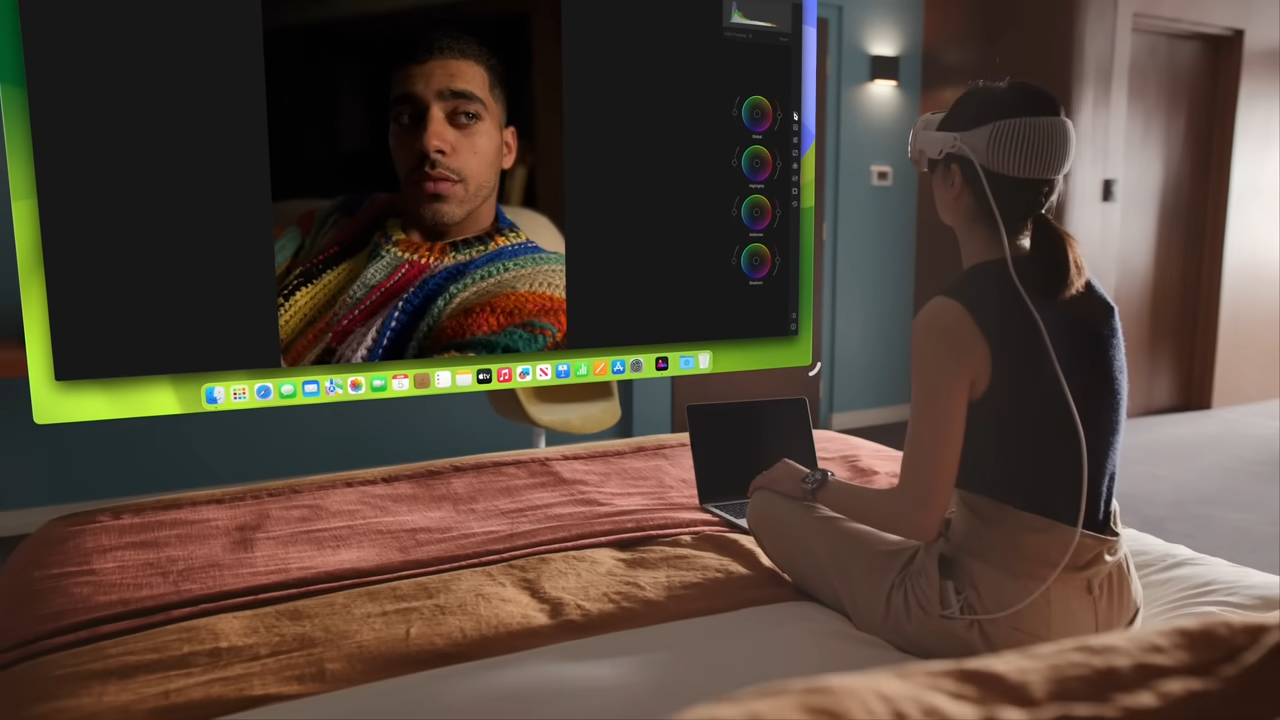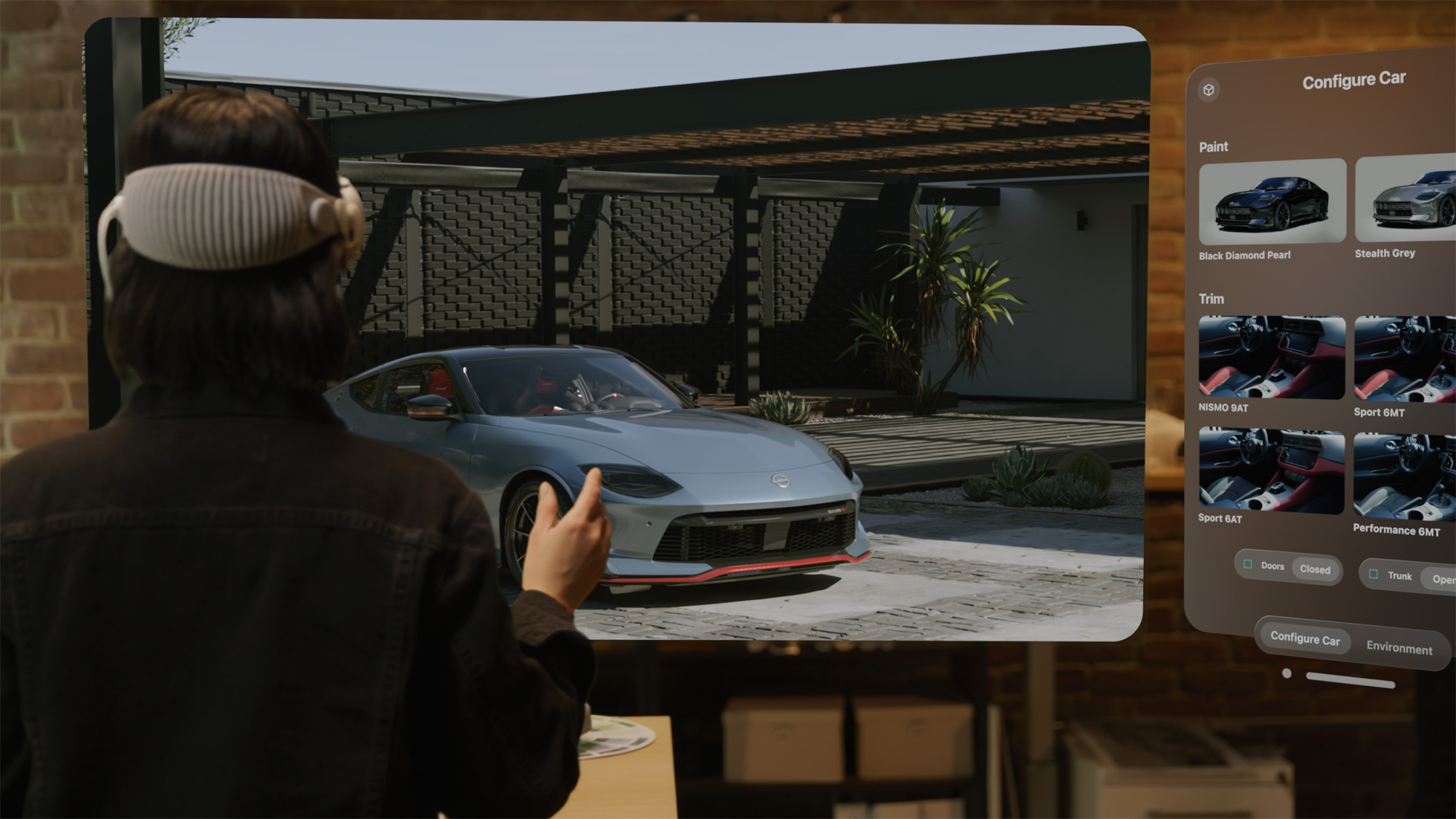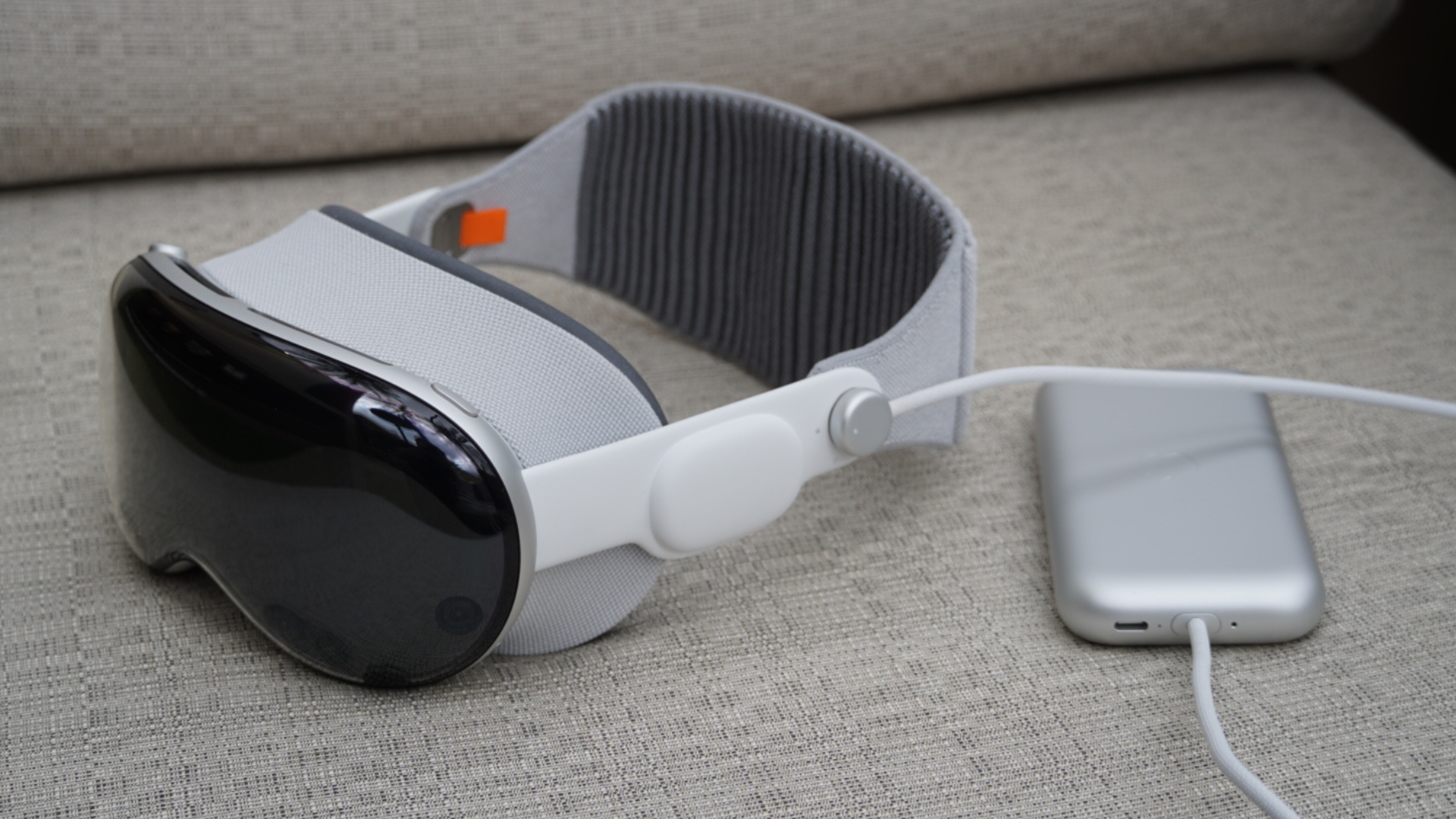Apple wants you to work in Vision Pro. But will your boss even care?
Can Apple make Vision Pro a business tool where Microsoft and Meta have previously (mostly) failed?

I’ve never peered directly into a pumping human heart before, much less taken one apart valve by valve with my bare hands. I have, however, blown up human skeletons before … with some help, that is.
Manufacturers of augmented reality devices like the Microsoft HoloLens and Epson Moverio and Toshiba DynaEdge have tried to persuade the business world of AR’s power for years; medical schools have been one particular area of focus. Which is why three years ago, I spoke with surgeons on the cutting edge who were embracing the tech, building HoloLens software that let you walk around human skeletons and truly explore the workings of the inner body. The experiences were magical at first, but eventually, the headset just felt cumbersome. I wasn’t alone thinking so, which may be why the incredibly impressive HoloLens has become a vestigial tech at Microsoft.
But maybe, just maybe, the tech wasn’t ready at the time? Maybe we needed augmented reality hardware and software to make a few more technical leaps? Maybe a different company can build a successful business, for business, upon the strong existing foundation?

“There’s tremendous opportunity for businesses to reimagine what’s possible using Apple Vision Pro at work,” said Susan Prescott, Apple’s vice president of Worldwide Developer Relations and Enterprise Marketing. Today Apple detailed the myriad ways it believes the Vision Pro is the right headset for businesses -- and last week, the company gave me the chance to see for myself.
I was able to play around with a pumping heart thanks to the astonishing new Vision Pro headset from Apple, which promises “spatial computing,” mixed reality, immersive videos, drive-in sized movie screens, and a whole lot more. Apple argues that, beyond the intriguing potential for ordinary people like you and me, the headset opens up a wealth of opportunities for businesses small and large. And to prove it, they’ve let me rip open a cadaver.
Making the case for Enterprise Vision Pro

Microsoft, Zoom, WebEx, and more are already available in the Vision Pro App Store. And there are over a million iPhone or iPad apps (ahem Slack) that haven’t been modified for Vision Pro yet will still run on it, the company notes. This is just the tip of the iceberg, Ross Rubin, principal analyst with research firm Reticle Research, told me.
“HoloLens was able to run UWP apps, a subset of Windows apps,” Rubin said. “In contrast, Apple Vision Pro can tap into a huge library of iOS apps that have a sparser layout that's friendlier to spatial computing.” To dip beneath the waters and see just what he means, Apple brought me to a cavernous white-walled vault deep within the company’s TriBeCa townhouse last week. The luxurious building is the house you’d own if you were Succession-level rich, and Apple uses it to showcase its iPhones, smart home tech, and so on. This time, I was about to experience productivity on a whole new level.
iMore offers spot-on advice and guidance from our team of experts, with decades of Apple device experience to lean on. Learn more with iMore!
On the table in front of me was a Vision Pro, with the Solo Knit Band and battery attached. Apple had pre-fitted Zeiss lenses to adjust for my terrible eyesight as well. I fitted the knit band around my head, tightened the knob to adjust it to my head, and went through the calibration process: You (predominantly) control the Vision Pro with a pinch gesture using your thumb and first finger. The device also tracks your eyes — hover over an icon and it “pops” out at you — a little 3D animation to indicate it knows where you’re looking. Pinch your fingers together to select a menu, open an app, etc. Pinch and slide left or right, or up and down, to scroll.
The hype is real: Click the immersive button and you’re sucked straight into a landscape
By now, you’ve probably heard people gush about immersive photography — “spatial” photographs taken by the Vision Pro or certain iPhones. The hype is real: Click the immersive button and you’re sucked straight into a landscape, a home video, a sunset, whatever, with breathtaking clarity. I immediately wanted every photo I’ve ever taken to capture this detail. And the ability to dial in more or less of an environment — replete with ambient audio — is tremendously neat.
Sure, it’s all incredibly intuitive, but the 25-minute fitting process alone feels like something an IT department might balk at. Regardless of whether a business has to service two dozen or two hundred employees, the time involved is literal money to an IT team. Rolling out new software to a fleet takes time, setting up new hardware takes time, and so on. Can IT afford the effort needed to set someone up for spatial computing success? That’ll hinge on how useful the tools are.
Bring on the Business apps
HoloLens was always positioned as mostly a tool for custom apps, meaning adoption would have necessitated intense development effort and costs. So what can off-the-shelf Vision Pro apps do for a business?
To answer that question, Apple helped me build a workspace: I placed the Safari app over someone’s shoulder to my right side, the photos app behind the woman at my left, and a Keynote presentation dead in front of me. Rather than working in the confines of a 14- or 16-inch laptop screen, the entire room was my desktop, and I could easily position apps feet from me or right up under my nose. And the display was crisp and sharp enough that I could read and work with a spreadsheet, unlike other AR headsets I’ve used.
Then I launched SAP Analytics Cloud, an analytics and planning tool that business tycoons can’t get enough of. The app launched Feb. 2 on Vision Pro, and it rethinks how you can use 3D objects and content to make data more real and easily understandable.

Before my eyes spun a virtual globe, showing the locations of a fictional company’s offices. I pinched my fingers together, opened a random campus, and sat it on the table in front of me (right on top of my cell phone - d’oh!). Without barely any instruction, I made the campus horizontal and scaled it up to fit nicely on the table. I watched with awe as an adorable, tiny helicopter made lazy circles in the sky over the virtual campus.
When I glanced at one of them, it danced out at me, and I easily pulled up a real-time feed of key facts — occupancy, power use, whatever data you might choose to explore. Curious about sales trends in different shops? Visualizations could make it real, and suggest distribution strategies that might otherwise seem hard to comprehend.
An adorable, tiny helicopter made lazy circles in the sky over the virtual campus.
I then launched Resolve, a “building design review app” that brings infrastructure to life. Remember the sweating pipes in the nightmarish basement Freddy Kruger lived in? Now imagine having to fix a leak in a given pipe. Resolve opened a world of pipes over my head in Apple’s cavernous space, a virtual overlay that didn’t exist but made obvious what the app could do. Two problem joints leapt out at me, as well as advice on how to repair them. Step aside, Freddy … this one’s an easy fix.
Still, I’ve seen this type of tech before, and so have businesses, I’m sure. Epson in particular has leaned into similar examples, and offered them in headsets designed to be used for hours that cost substantially less. Can Apple somehow succeed here?
“Commercial buyers will need to be convinced of the ROI,” Rubin admitted to iMore. “But Apple's in a better position to seed the market as a catalyst. In fact, it may become a self-fulfilling prophecy: You didn't see the Android camp react when Microsoft released HoloLens. But not long after Apple announced Vision Pro, Samsung, Qualcomm, and Google wasted no time in announcing they were ready to jump into this market as well.”
That gives the category broader legitimacy, he pointed out. A handful of oddball devices is less compelling for a big business than solutions from four of the world’s most valuable technology companies.
So can Apple succeed where others have failed? That’s the gamble here, and it’s certainly a billion-dollar bet. One thing is certain: Vision Pro is spectacular. But will it be a spectacular success? Only time will tell.
More from iMore
After 25 years covering the technology industry, Jeremy Kaplan is a familiar face in the media world. He is currently the Content Director for iMore, where he oversees product development and quality for one of the world's largest and most respected technology publishers.
Before joining the iMore, Jeremy was Editor in Chief of Digital Trends, where transformed the niche publisher into one of the fastest-growing properties in digital media, ranking on the annual Inc 5,000 for three years running. The publisher won multiple awards during his tenure, including a sought-after Digiday Content Marketing Award in 2019. The same year, Jeremy was named to the FOLIO: 100, which honors publishing professionals making an industry-wide impact.
Prior, he served five years as the science and technology editor for FoxNews.com, where he made international news through a series of articles exposing Hector Xavier Monsegur as the head of LulzSec, revealing a months-long collaboration with the FBI, and detailing the ultimate takedown by law enforcement officials of the hacker collective. Kaplan worked for over a decade at Ziff Davis Media, publisher of PCMag.com and Extreme Tech. While there, he helped found the GoodCleanTech blog, which was a 2008 finalist in the MIN Best of the Web Awards and the Jesse H. Neal National Business Journalism Awards Competition and ultimately served as Executive Editor.
He's a sought-after tech pundit and futurist who’s worked with organizations like the Consumer Tech Association to identify and highlight the world’s most innovative technology. Kaplan appears regularly on television and radio, including frequent appearances on Fox Business, Reuters, Cheddar, and NPR.
